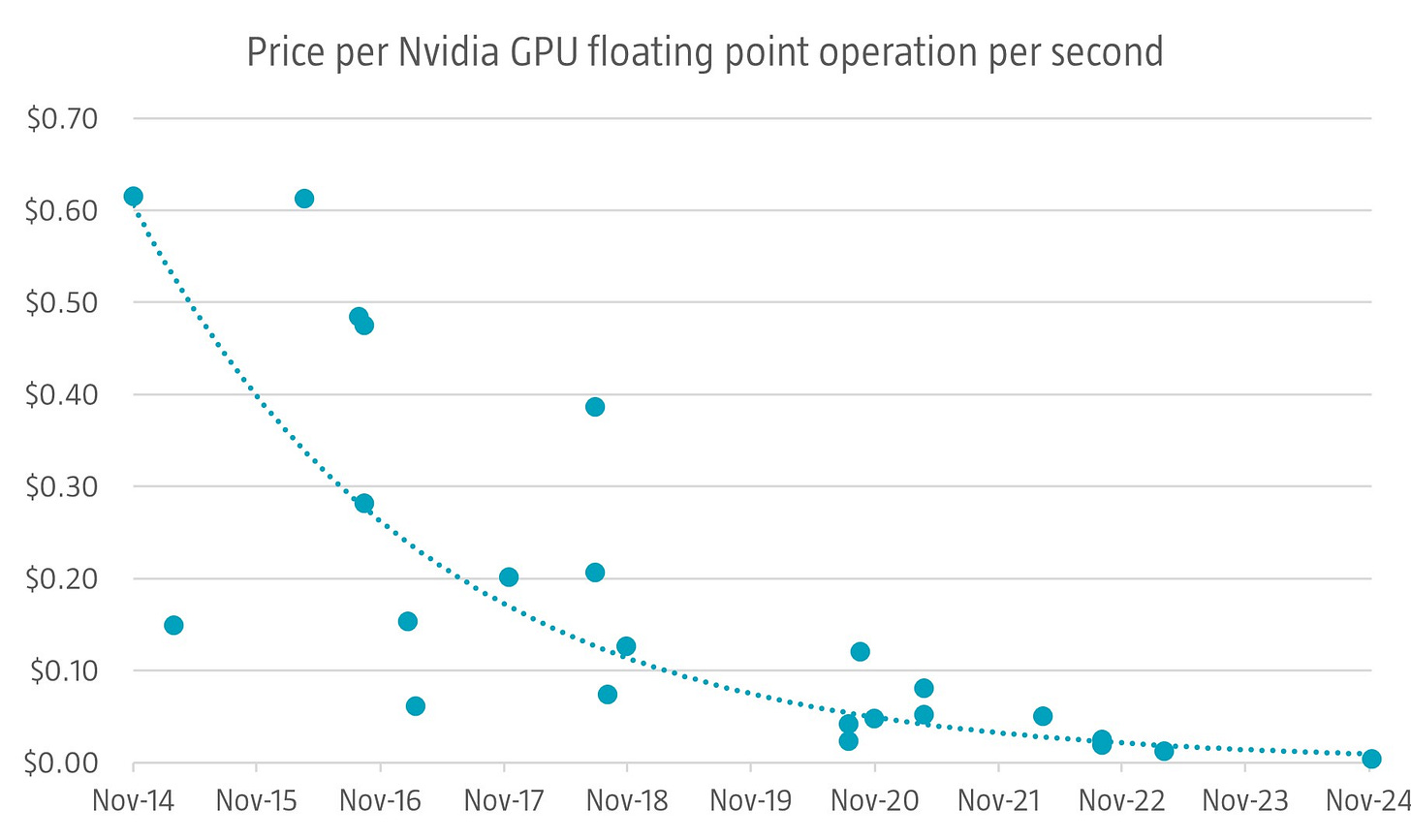Economic AI
Since the release of the China-based artificial intelligence (AI) model from software developer DeepSeek, the market has been concerned that lower cost technology would undermine the economics of AI models produced by US technology leaders. Although subsequent research has found DeepSeek’s cost advantage was highly exaggerated, the trend toward increasingly efficient technology is an industry standard. For instance, over a 30-year period, the cost of a transistor, a solar module, and a lithium-ion battery each fell by more than 99%. The cost of sequencing DNA fell by more than 99% in just a decade between 2003 and 2013. For AI, price improvements are driven by a combination of advances in both software and semiconductors. Although the price of AI-dependent graphical processor units (GPUs) has risen, the amount of data those semiconductors process has jumped exponentially. As a result, the price per floating point operation per second of an Nvidia GPU has also fallen by more than 99% in the last ten years. While the chart of that GPU price performance below appears to show slowing progress, even in the last two years the price of a single calculation has fallen by nearly 75%.
Source: EPOCH AI, February 2025




